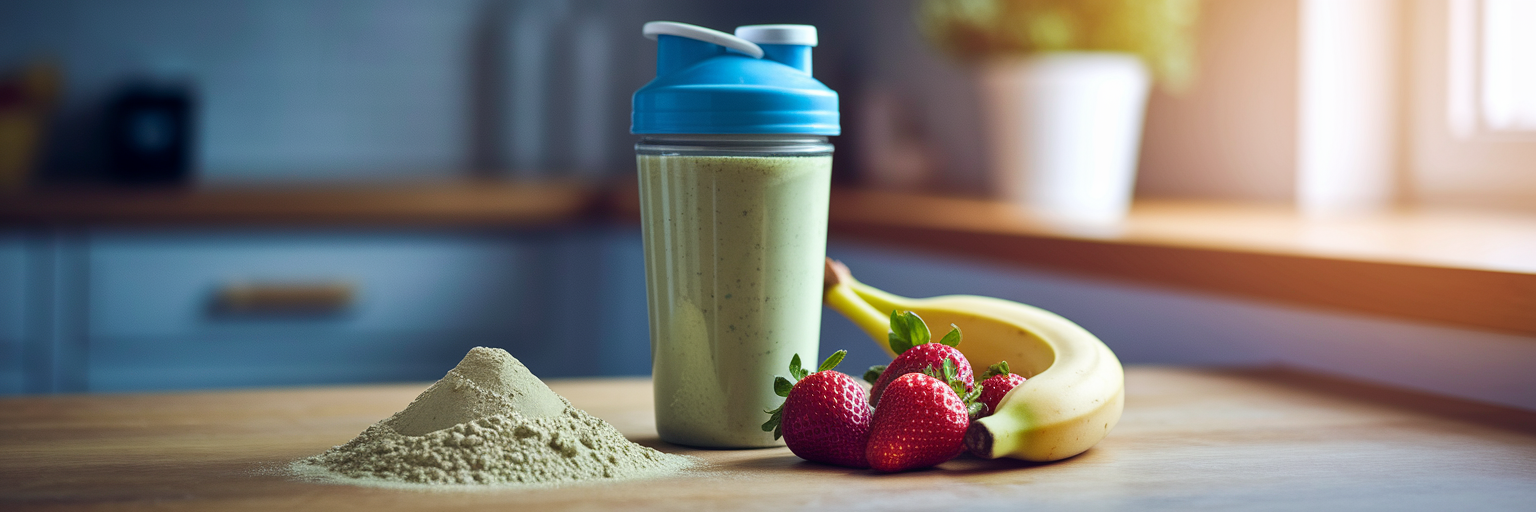If you're a vegan athlete, you've probably heard whispers about creatine. Maybe you dismissed it, thinking it was an animal-derived supplement. Let's clear that up right away: creatine monohydrate is synthetically made and 100% vegan-friendly. It’s one of the most researched supplements on the planet, and for plant-based athletes, it can be particularly effective.
Why Creatine Is a Key Supplement for Plant-Based Fitness
At its core, creatine helps your body produce energy. Think of it as the fuel for the first few seconds of an intense activity, like the initial burst of power needed for a heavy squat or a sprint. It works by helping regenerate a molecule called ATP, which is your muscles' primary energy source. When you have more creatine stored in your muscles, you can perform more work before fatigue sets in.
This is especially important for those on a plant-based diet. The main dietary sources of creatine are meat and fish, so vegans and vegetarians naturally have lower baseline levels in their muscles. This means that supplementation isn't just a minor tweak; it's a direct way to bridge a nutritional gap. For creatine for plant based athletes, supplementation helps level the performance playing field, ensuring your muscles have the fuel they need to match your ambition.
The performance advantages are well-documented, and you can explore the full spectrum of our creatine benefits to understand its impact. The primary upsides include:
- Increased strength for heavier lifts and progressive overload.
- Enhanced power output for more explosive movements in sports and training.
- Improved muscle endurance to help you push through those last few challenging reps.
- Faster recovery between sets, allowing you to maintain intensity throughout your workout.
Choosing a High-Quality Vegan Creatine

When you're ready to buy, the supplement aisle can feel overwhelming. The key is to keep it simple. Look for a product that is just pure creatine monohydrate. This form is the most studied, most effective, and typically the most affordable. Avoid complex formulas loaded with unnecessary fillers, sugars, or proprietary blends that hide what you're actually getting.
To ensure quality, check for third-party certifications like NSF or a "Certified Vegan" logo. These labels confirm that the product has been tested for purity and doesn't contain contaminants or animal-derived ingredients. You might also see the term "micronized" on the label. Think of it like powdered sugar versus granulated sugar; micronized creatine has smaller particles that dissolve more easily in water, which can be gentler on the stomach and less gritty to drink.
A simple, unflavored powder offers the most flexibility, allowing you to mix it with any drink. For a reliable option, consider a pure creatine monohydrate that meets these quality standards and gives you exactly what you need without the fluff.
The Best Times to Take Your Creatine
One of the most common questions is about timing: when is the best time to take creatine for maximum results? While people have strong opinions, the science suggests that the answer is simpler than you might think. Let's look at the popular strategies.
The Post-Workout Window: A Popular Strategy
Many athletes swear by taking creatine after their workout, often mixed with a protein shake. The theory is that your muscles are more receptive to nutrients during this "anabolic window" following exercise. Pairing creatine with carbohydrates and protein at this time could potentially enhance its uptake into the muscle cells, kickstarting the recovery process.
The Pre-Workout Option: Fueling Your Session
Another approach is to take creatine before your workout. The logic here is to "pre-load" your muscles with energy, ensuring your creatine stores are topped off right when you need them for intense effort. Some people feel a psychological boost from this method, knowing they are fully fueled for the session ahead.
The Real Key: Consistency Over Timing
While there are theories supporting both pre- and post-workout timing, the most critical factor is consistency. The goal of creatine supplementation is to saturate your muscles over time. As noted by Healthline, research has explored both timings, but the overall benefits are most strongly linked to consistent daily use rather than a specific window. The real secret to how to take creatine effectively is simply to take it every single day. Whether it's in the morning, afternoon, or evening, find a time that fits your routine and stick with it. Building consistent habits is the foundation of any successful fitness journey. For more insights on optimizing your routine, check out our other articles.
Perfect Pairings for Better Absorption and Growth

Now that we've established that daily consistency trumps exact timing, let's talk about what you should take your creatine *with*. The right pairings can help your body absorb it more efficiently and support your overall fitness goals.
The classic combination is vegan protein and creatine, especially after a workout. Creatine helps replenish your immediate energy stores, while protein provides the essential amino acids your muscles need to repair and grow. They work as a team to accelerate your recovery.
Adding a source of simple carbohydrates can also help. Think of carbs as the delivery truck that helps shuttle creatine into your muscle cells more efficiently. A small insulin response, triggered by carbs like a banana or a splash of fruit juice, can improve creatine uptake. A go-to combination is a scoop of a quality chocolate vegan protein, a banana, and your daily dose of creatine blended into a delicious post-workout shake. If you need more inspiration, you can find some easy vegan protein recipes to get started.
Here are a few simple pairing ideas:
- Post-Workout Power Smoothie: Blend 1 scoop of vegan protein powder, 1 banana, a handful of spinach, and 5g of creatine with almond milk.
- Rest Day Oatmeal Boost: Stir 5g of creatine into your morning oatmeal along with berries and a sprinkle of cinnamon.
- Quick Carb Shake: Mix 5g of creatine with a glass of orange or grape juice for fast absorption.
Your Dosing Strategy: Loading vs. Maintenance
When it comes to how much creatine to take, you have two primary strategies: a loading phase or a straight maintenance dose. Both are effective, so the choice comes down to your personal preference and how quickly you want to see results.
The loading phase is an optional approach designed to saturate your muscles as quickly as possible. It involves taking a higher dose, typically 20 grams per day (split into four 5-gram servings), for about 5 to 7 days. After this period, you drop down to a daily maintenance dose of 3 to 5 grams.
The alternative is to skip the loading phase and start directly with the maintenance dose of 3 to 5 grams per day. This method is simpler and gentler on the stomach, but it will take longer—about three to four weeks—to fully saturate your muscles and experience the full benefits. It's important to know that loading is not mandatory. Both paths lead to the same destination. Extensive research has confirmed the safety of long-term creatine use in healthy individuals. A comprehensive review published by the NCBI found no adverse effects on kidney function from recommended doses, debunking many long-standing myths.
| Factor | Loading Phase | Maintenance-Only |
|---|---|---|
| Daily Dose | 20-25 grams (split into 4-5 doses) for 5-7 days | 3-5 grams daily from the start |
| Time to Full Saturation | ~1 week | ~3-4 weeks |
| Best For | Athletes wanting the fastest possible results | Anyone prone to bloating or preferring a simpler routine |
| Potential for Bloating | Higher initially due to large dose | Minimal |
This table compares the two common dosing strategies. The loading phase offers faster results, while the maintenance-only approach is simpler and minimizes the chance of initial bloating. Both methods are equally effective in the long run.
How to Avoid Common Pitfalls Like Bloating
The most common concern people have when starting creatine is bloating. The good news is that avoiding creatine bloating is usually straightforward. It typically comes down to two factors: taking too much at once or not drinking enough water.
Creatine works by pulling water into your muscle cells, which is great for performance but means you need to increase your fluid intake to stay properly hydrated. Aim to drink at least 8 to 12 glasses of water per day. This not only prevents bloating but also helps the creatine do its job effectively.
If you have a sensitive stomach, especially during a loading phase, try these tips:
- Split your dose: Instead of taking 20 grams at once, break it into four smaller 5-gram servings throughout the day.
- Take it with food: Mixing creatine with a meal or snack rather than taking it on an empty stomach can reduce the chance of digestive discomfort.
By following these simple steps, you can enjoy all the vegan creatine benefits without the unwanted side effects. If you have more questions about supplements or your fitness journey, our FAQ page is a great resource.



